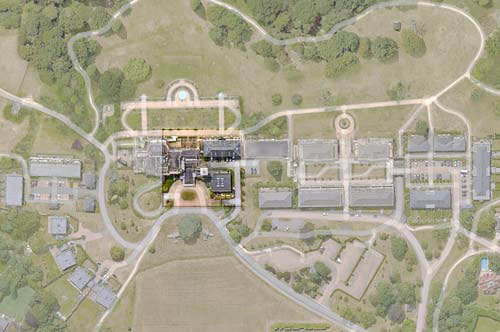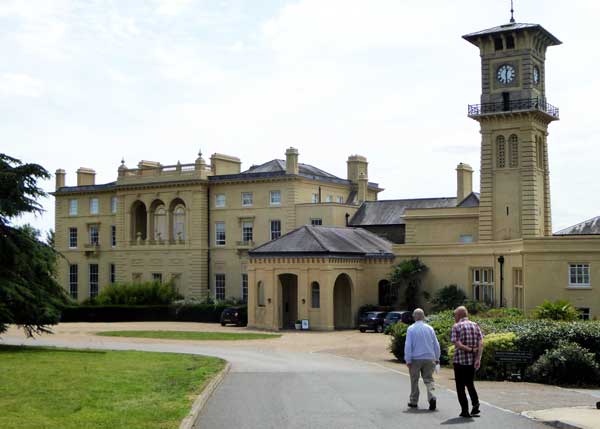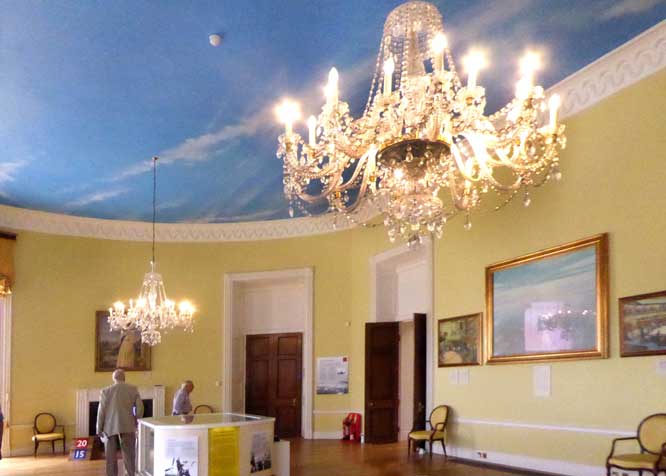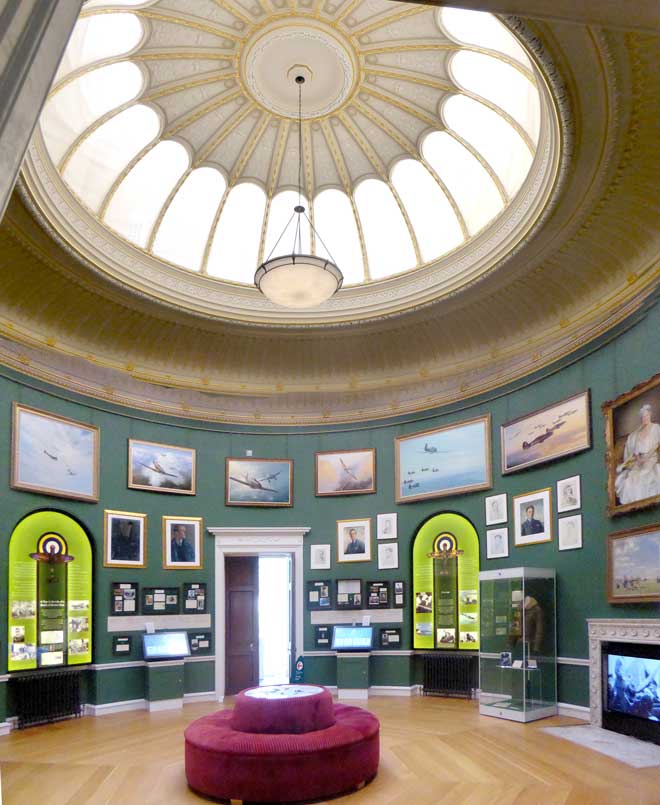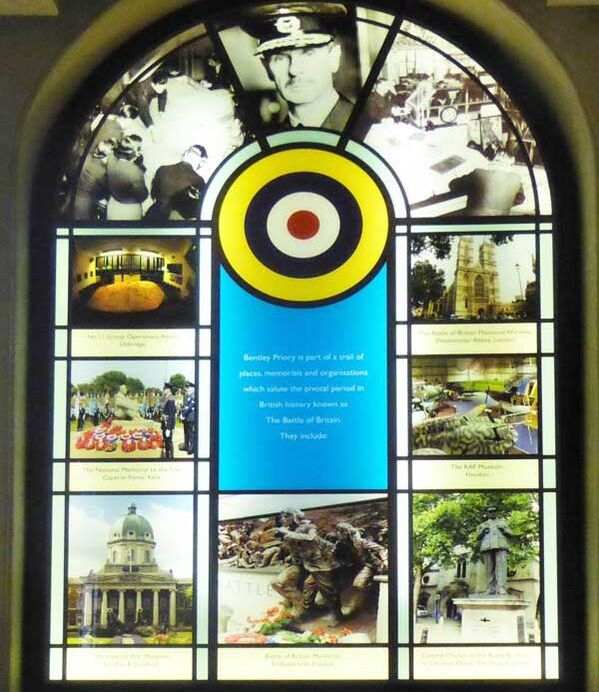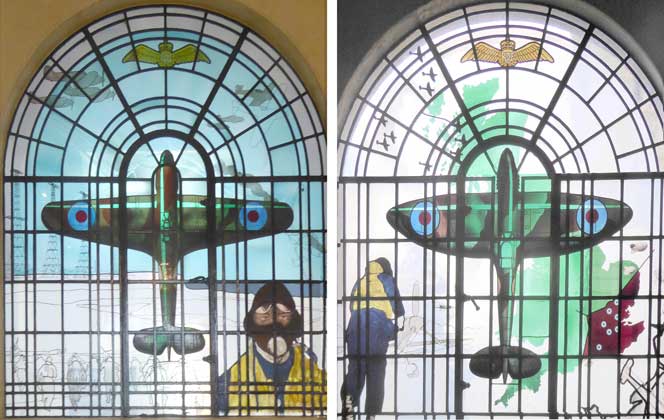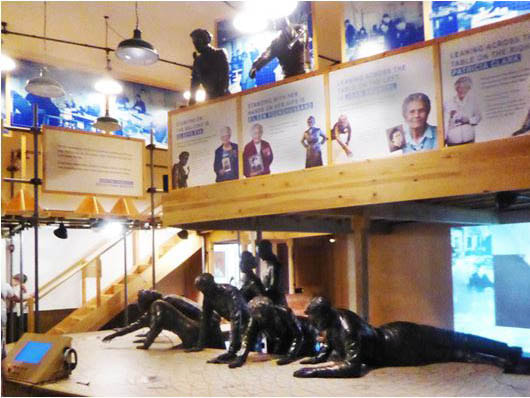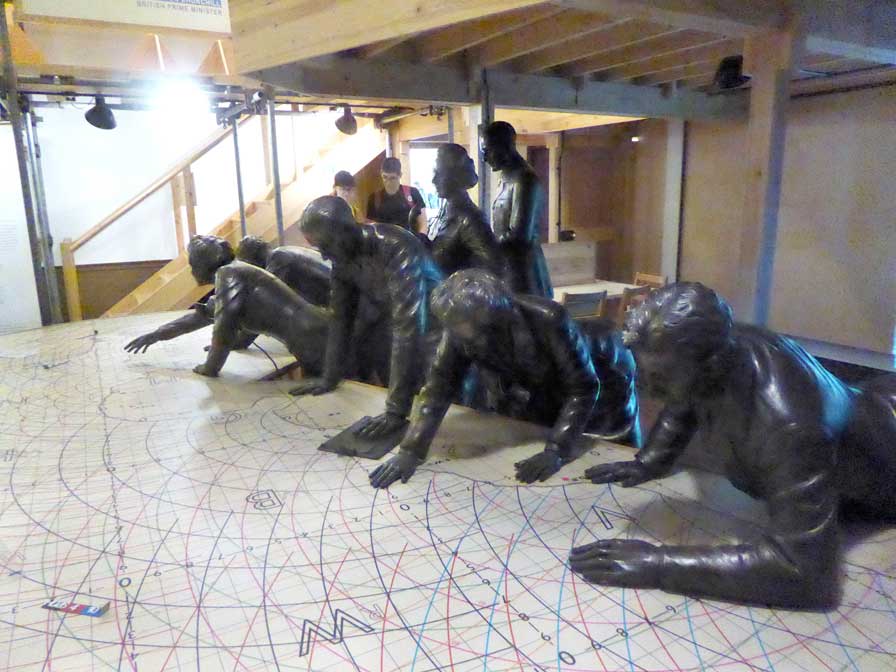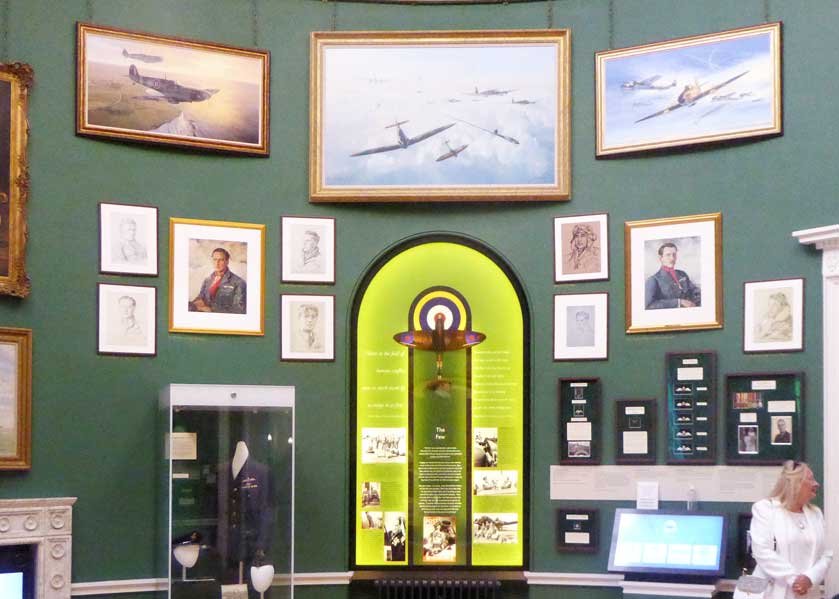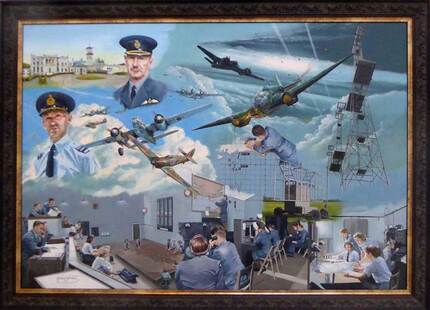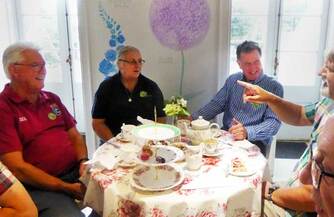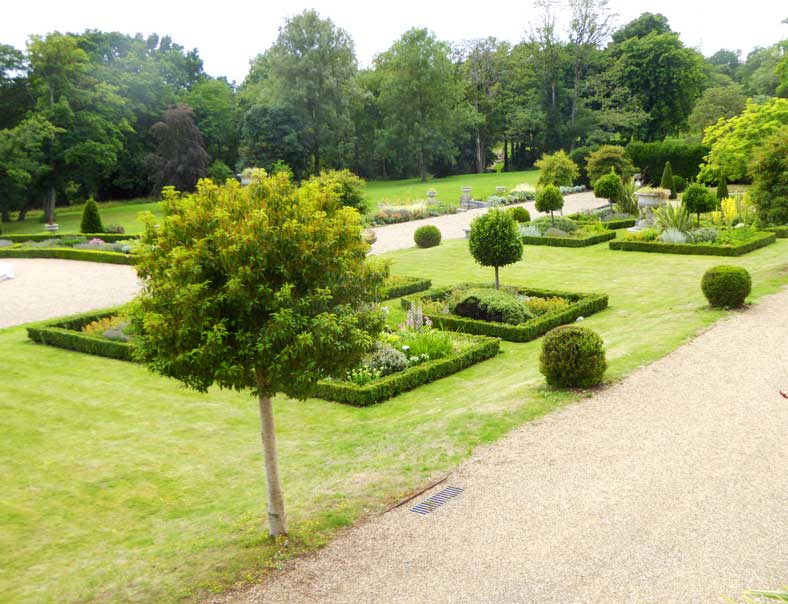Bentley Priory (July 2023)
Bentley Priory itself is an elegant country mansion that was once used as a girls’ school and later, briefly, as an hotel. It was unoccupied when the estate was bought by the RAF in 1926 and then adapted as the HQ of the newly formed Fighter Command in 1936. The RAF left the site in 2008 but retained the house which was opened as a museum in 2013. All the other buildings on the estate were converted into houses and apartments. It is now a gated community and the uniformed gate keeper explained exactly where we should park our cars and where we shouldn't go before raising the barrier to let us in.
The house itself is beautifully furnished and with many of its windows replaced by stained glass panels, the atmosphere inside is rather like that in a stately home or a cathedral, almost inducing reverence and hushed conversation.
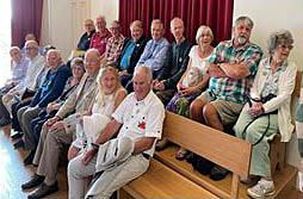
We were met on the terrace by a guide who told us about the history of the house and its many owners then we were ushered into a viewing room. The screen was the whole wall in front of us and from time to time during the film, which told the story of the Battle, the lights behind the semi-transparent screen were lit and we could see into Dowding’s office and desk. Very clever.
Next we assembled in an open space in a corridor to hear about the Battle from Dowding’s point of view, about the criticism, lack of co-operation, even dis-obedience from, principally, Sholto Douglas in 12 Group.
Next we assembled in an open space in a corridor to hear about the Battle from Dowding’s point of view, about the criticism, lack of co-operation, even dis-obedience from, principally, Sholto Douglas in 12 Group.
Before moving on, our guide pointed out that he was not a ‘technical man’ and unlikely to be able to answer any questions we might have in the Operations Room. He led the way through the Ops Room, without stopping, into another large room at the front of the house. (The original Ops Room had been underground beneath another building. This had been cleared and the building was one of those sold off). The 'Ops Room' in the museum was a replica of just part of an Ops Room. The plotting table was 90° out of orientation and incorrectly marked - and there was a balcony where the Controllers would sit, though this was not partitioned by glass which minimizes sound intrusion. There was no display of all the other information controllers need of squadrons' state of readiness, aircraft and pilots available, weather etc.which usually covers the wall opposite the balcony.
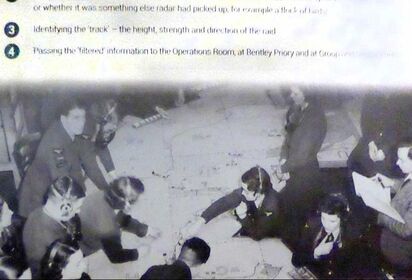
It was how the plotters were displayed that was quite shocking. They were crawling over the table - to do what?. The first instruction given to plotters is 'Don't lean over the table and obscure the view of the Controllers'. There were just one or two plots and plot markers scattered on the table all using symbols and marker boards that would appear only on Observer Corps tables, not those used in the Fighter Command Ops Room.
Clearly the Curators had done no research into how Operation Rooms work or even visited one of the preserved Ops Rooms, like 11 Group's Ops Room at Uxbridge, before commissioning this expensive and inaccurate misrepresentation. They even had a film made (and what did that cost?) which compounds the felony.
And yet, they dug deeply enough to tell the stories of individual plotters. like Patricia Clark, who is pictured on a display board (in the top right hand corner of the picture above left). Her words are preceded by 'Leaning across the table . . .'. Had she known about this, Patricia would have protested strongly. Curiously, though it was obvious from our guide's remarks and behaviour, the present curators are well aware of their errors yet they keep this farcical display on show.
Clearly the Curators had done no research into how Operation Rooms work or even visited one of the preserved Ops Rooms, like 11 Group's Ops Room at Uxbridge, before commissioning this expensive and inaccurate misrepresentation. They even had a film made (and what did that cost?) which compounds the felony.
And yet, they dug deeply enough to tell the stories of individual plotters. like Patricia Clark, who is pictured on a display board (in the top right hand corner of the picture above left). Her words are preceded by 'Leaning across the table . . .'. Had she known about this, Patricia would have protested strongly. Curiously, though it was obvious from our guide's remarks and behaviour, the present curators are well aware of their errors yet they keep this farcical display on show.
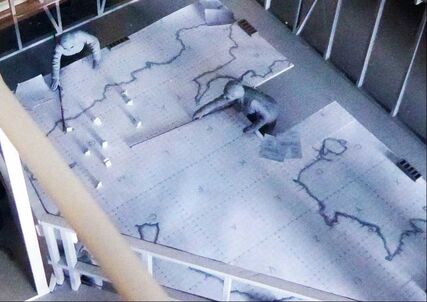
In the last room, where the guide left us, several screens were running films of other elements of Dowding's defence system, radar, balloons. AA artillery, Observer Corps and, of course, the fighter squadrons. All these gave a good documentary coverage of their subject and were in marked contrast to the to the specially produced fiasco of the frenzied plotters.
Another interesting exhibit was the very model of an operations room which Dowding had made to demonstrate to the authorities who were going to release the money to build the defence system. Even at this very early stage when everything was just on paper or in model form the specification incuded those push-sticks to stop the plotters leaning over the table.
Another interesting exhibit was the very model of an operations room which Dowding had made to demonstrate to the authorities who were going to release the money to build the defence system. Even at this very early stage when everything was just on paper or in model form the specification incuded those push-sticks to stop the plotters leaning over the table.
